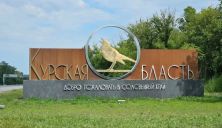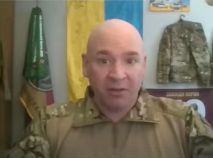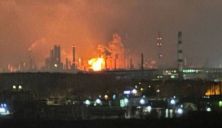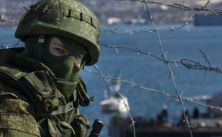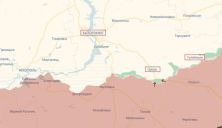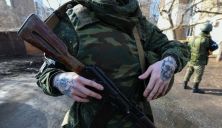On February 5, the 61st exchange of prisoners of war took place. Ukraine returned 150 citizens from Russian captivity, including defenders of Mariupol and “Azovstal.”
According to the Coordination Headquarters for the Treatment of Prisoners of War, 108 soldiers of the Armed Forces of Ukraine are returning home (including 7 from the Territorial Defense Forces, 26 from the Naval Forces, and 3 from the Air Forces). Also released from captivity were 22 National Guardsmen, 19 border guards, and one representative of the National Police.
They defended Ukrainian land from the enemy in Kharkiv, Zaporizhzhia, Donetsk, and Luhansk regions, as well as in Kherson, Sumy, and Kyiv regions.
Among the freed Ukrainian captives, there are those who were in Russian captivity for more than two and a half years.
“And today, for them and their relatives, this is a day that outweighs years of waiting. It is true happiness to see them at home, alive, and free,” emphasized the President of Ukraine, Volodymyr Zelenskyy.
Read also: Head of Hungarian Community accuses Orban. Interview with Tibor Tampa
It is worth noting that the exchange of prisoners has always been used by the Russian side for its own interests—to destabilize the situation in Ukraine. The agitation of the topic of Ukrainian captives in Russian captivity by Russian special services is an element of the Kremlin’s information-psychological special operation. Moreover, even before the full-scale invasion, Russians did everything to block the possibility of handing over prisoners and political detainees to Ukraine.
After the start of Russia’s full-scale invasion in February 2022, the situation with the exchange of prisoners of war worsened, and the Kremlin’s cynical manipulations on this topic reached a new level.
Thus, on May 29 last year, the Ukrainian side refuted provocative statements by the Commissioner for Human Rights of the Russian Federation, Moskalkova, about the alleged “suspension of prisoner exchanges with Ukraine due to the imaginary demands of the Ukrainian side.” At that time, Moskalkova stated that “the exchange of prisoners of war between Russia and Ukraine was suspended for several months.” At the same time, she accused Kyiv of “false demands.”
By unblocking the exchange process, Russia supposedly demonstrates a so-called “gesture of goodwill.” At the same time, the Kremlin presents itself as an allegedly negotiable party.
This is a Byzantine practice—Moscow is ready to negotiate but reserves the last word for itself. The exchange of prisoners will be presented as a signal to Western countries regarding Russia’s alleged “goodwill.”
According to the Coordination Headquarters, in addition to military personnel, more than 16,000 Ukrainian civilians are currently in Russian captivity, which is an outrageous large-scale crime by Putin’s Russia.
It is important to note that the exchange of civilian citizens for prisoners of war is not provided for by international humanitarian law and the Geneva Conventions.
According to the Commissioner of the Verkhovna Rada for Human Rights, Dmytro Lubinets, only 168 people have been released so far.
And if the list includes 16,000 civilian Ukrainians, the process of their return may take years. Moreover, Russia will constantly replenish the exchange list with new captives among civilians, as it has done before.
As early as December 13, 2017, the NGO “Prava Sprava” (a public organization I lead) received information that a meeting took place in occupied Luhansk with the participation of the then-leader of the so-called “LPR” militants, Plotnytskyi, where the issue of increasing the number of Ukrainian captives at the expense of pro-Ukrainian-minded local residents was raised.
On December 28, 2017, relying on operational information from the analytical department of “Prava Sprava,” I informed Ukraine’s special services that a similar meeting had taken place in the so-called “Ministry of State Security of the LPR” in occupied Luhansk. At that time, it was reported that in recent weeks, the number of cases of illegal detentions of local residents by the so-called “special services” of the self-proclaimed “republics” on charges of cooperation with Ukrainian special services and the Armed Forces of Ukraine had significantly increased. The number of detained civilians by the “MGB LPR” was named—ranging from 13 to 15 local residents.
On December 30, 2017, representatives of the law enforcement agencies of the so-called “LPR” were forced to confirm the fact of the meeting. The self-proclaimed acting “head of the People’s Militia Directorate of the LPR,” Filiponenko, reported that a coordination meeting with law enforcement leaders was held that week, during which issues of countering the “subversive activities” of Ukrainian special services in the territory of the “republic” were discussed, with the assignment of tasks to neutralize them, “as well as issues of countering terrorism and sabotage activities of the enemy.”
The first results of the “practical activities” of the militants’ law enforcement agencies in “countering terrorism” could be judged from the reports of the press service of the “MGB LPR” about the detention in occupied Luhansk of employees of the humanitarian organization ACF (Action Against Hunger). The “MGB LPR” employees accused the detained civilians of allegedly cooperating with Ukrainian special services.
After that, the militants’ special services began to capture everyone indiscriminately and accuse them of working for Ukrainian special services, then sentencing them to 12 years in prison. Thus, Russian special services, which actually controlled these processes, regularly replenished the lists of captives with civilians. Both in Luhansk and Donetsk, waves of mass arrests took place. These included the arrests of fans of the football club “Zorya,” and in Donetsk—teenagers aged 16 to 18.
According to local sources of the analytical department of “Prava Sprava,” mass raids are currently taking place in the occupied territories of Ukraine. The traditions of the 1930s have been revived there, with people writing anonymous reports, and labor collectives trying to identify “traitors” among their ranks.
The capture and detention of civilian hostages by Russia prove that Russia’s war against Ukraine is genocidal. Civilians should not be in Russian captivity, and their rights should not be restricted. The very fact that thousands of Ukrainian civilians are in Russian captivity today is an outrageous large-scale war crime by Putin’s Russia.
Regarding the conditions of detention of civilians taken hostage by Russia, according to Ukrainian intelligence, in many cases, civilian captives are held outside the legal system.
Let me remind you that after prolonged torture in Russian captivity, the kidnapped mayor of Dniprorudne, Yevhen Matveyev, died. The occupiers held him hostage for 2 years and 8 months.
At the same time, unfortunately, international institutions do not have the ability to verify the conditions of detention of Ukrainian civilian citizens.
In total, as of today, 4,131 people have been returned from Russian captivity: both military personnel and civilians, as well as foreign citizens.
Military and political analyst Dmytro Sniehyrov.
Read also: There will be many more strikes on Russia — Ukrainian drones will change the rules of the game



